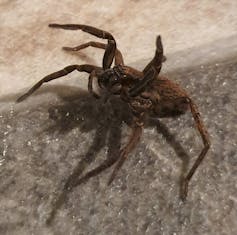After many previous attempts in this area, researchers at the Massachusetts Institute of Technology (MIT) have succeeded in translating the mobility of insects into tiny flying robots. As with many cases of robotic technology, the team looked for inspiration in nature. Insects are extremely acrobatic and resistant to collisions in flight and can find their way efficiently in changing conditions such as gusts of wind and obstacles.
Professor Kevin Yufeng Chen is the one who built the system. He is a member of the Department of Electrical Engineering and Computer Science and the Research Laboratory for Electronics.
The research was published in the journal IEEE transactions in robotics. Co-authors included Zhiijian, MIT graduate student; Siyi Xu, PhD student at Harvard University; and Pakpong Chiraattananon, robotics from the City University of Hong Kong.
Flying robot with soft actuator
The flying robots rely on a new class of soft actuators with which they can cope with various physical challenges in real flight. According to Chen, the robots could eventually be used by humans to pollinate plants or inspect machines in a small space.
Current drones require open spaces because they cannot be used in a confined space, mainly due to the fact that they cannot handle collisions.
“If we look at most of the drones today, they’re usually pretty big,” says Chen. “Most of her uses involve flying in the open air. The question is: can you make insect-scale robots that can move around in very complex, crowded spaces? “
According to Chen, the challenge of building small flying robots is immense.
Alternatives to scaled-down engines
One of the main limitations of larger drones is that they require motors that lose efficiency as they scale down, which is why Chen says there must be alternatives.
The main alternative up to this point has been a small and rigid actuator made from piezoelectric ceramic materials. These materials were responsible for the first generation of tiny flying robots. However, they are fragile, which makes it difficult for the robots to endure collisions.
Chen relied on soft actuators to create a more reliable tiny robot, and unlike hard ones, they are made up of thin rubber cylinders coated with carbon nanotubes. Through the process of repeated stretching and contraction caused by generated electrostatic forces, the drone’s wings can flap quickly.
Similar to an insect, the new actuators can flutter 500 times per second.
“You can hit it when it flies and it can recover,” says Chen. “It can also perform aggressive maneuvers like somersaults in the air.”
The insect-like drone weighs only 0.6 grams, which is almost the mass of a large bumblebee.
“If you want to learn how insects fly, it is very educational to build a full-scale robot model,” says Chen. “You can disturb some things and see how this affects the kinematics or how the fluid forces change. This will help you understand how these things fly. “
Chen hopes the robots can be used in various industries such as agriculture. Possible applications are plant management and search and rescue missions.
“All of these things can be a big challenge for existing large robots,” says Chen.










